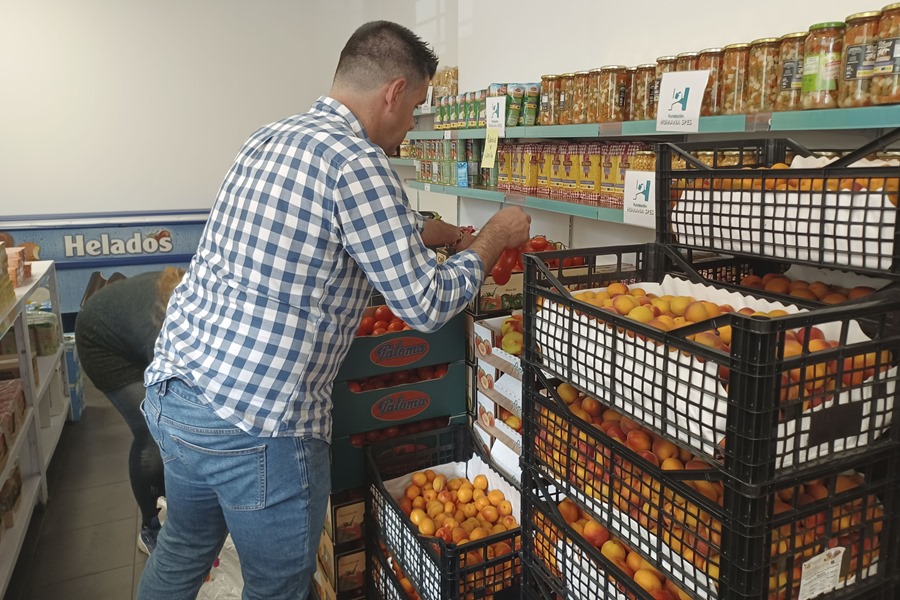Madrid (EFE).- The increase in the price of the shopping cart has not only affected the pockets of consumers, it has also reduced the reserves of food banks, which continue to serve 1.2 million people in vulnerable situations .
Food stores that help alleviate hunger saw their users increase by 50% during the pandemic, going from 1,050,684 beneficiaries in 2019 to 1,560,000 in 2020, including 267,079 children between the ages of 3 and 15 and 53,123 infants 0 to 2 years.
The Spanish Federation of Food Banks (Fesbal) calculates that in 2023 there are still more than 1.2 million people who need help to feed themselves, in line with the number of individuals who attended in 2022.
Now the figure has stabilized, details in statements to EFE the director of Fesbal, Francisco Greciano, who stresses that the profile of users is increasingly “normalized.”
From long-term unemployed to single-parent families (headed by a single woman), these are some of the profiles that food banks find most frequently through associated entities.

Fewer resources
In addition, the inflation that affects consumers when shopping also affects the pockets of food banks, which have been forced to reduce the amount of food they purchase due to rising prices.
In 2022 they went from distributing a national average of 128 kilos per person per year to 122 kilos, an amount that will continue to drop in 2023.
Greciano lists obstacles such as the decrease in the cereal harvest and the increase in the price of basic foods such as fruit due to the drought, which impacts even more strongly on the users of food banks.
Milk, infant nutrition foods, oil and canned fish are some of the most demanded products and with which more availability problems are being encountered in stores.
Added to the rise in prices is the decline in donations from the distribution chains since the law against food waste came into effect last January, since much of the fruit and vegetables that are not in perfect condition ended up in food banks and now it is sold under promotions in supermarkets, according to Greciano.
In addition, food banks have run out of milk reserves because this year’s tender for the European aid fund for the most disadvantaged (FEAD) has not included this product.
The director of Fesbal shows concern at the prospect that the lower donations put the food reserves of the banks in a bind while the users grow due to inflation.

chronic poverty
In 2022, the percentage of people at risk of poverty or social exclusion stood at 26% of the population in Spain, compared to 27.8% in 2021, according to the latest survey of living conditions of the National Institute of Statistics (INE). ).
In general, Spanish households are already reducing their purchases as a result of the rise in food prices, which last April was 12.9% in the annual rate, high levels that are beginning to be contained.
The latest official food consumption data shows that households bought 8.7% less food between December 2021 and November 2022 compared to a year earlier, as the average price increased by 7.6%.
The lower purchases of meat, fish, dairy and other basic products such as bread, eggs, sugar, legumes, oil and fresh fruits and vegetables stand out, which shows that the rest of the population is also tightening the belt.






